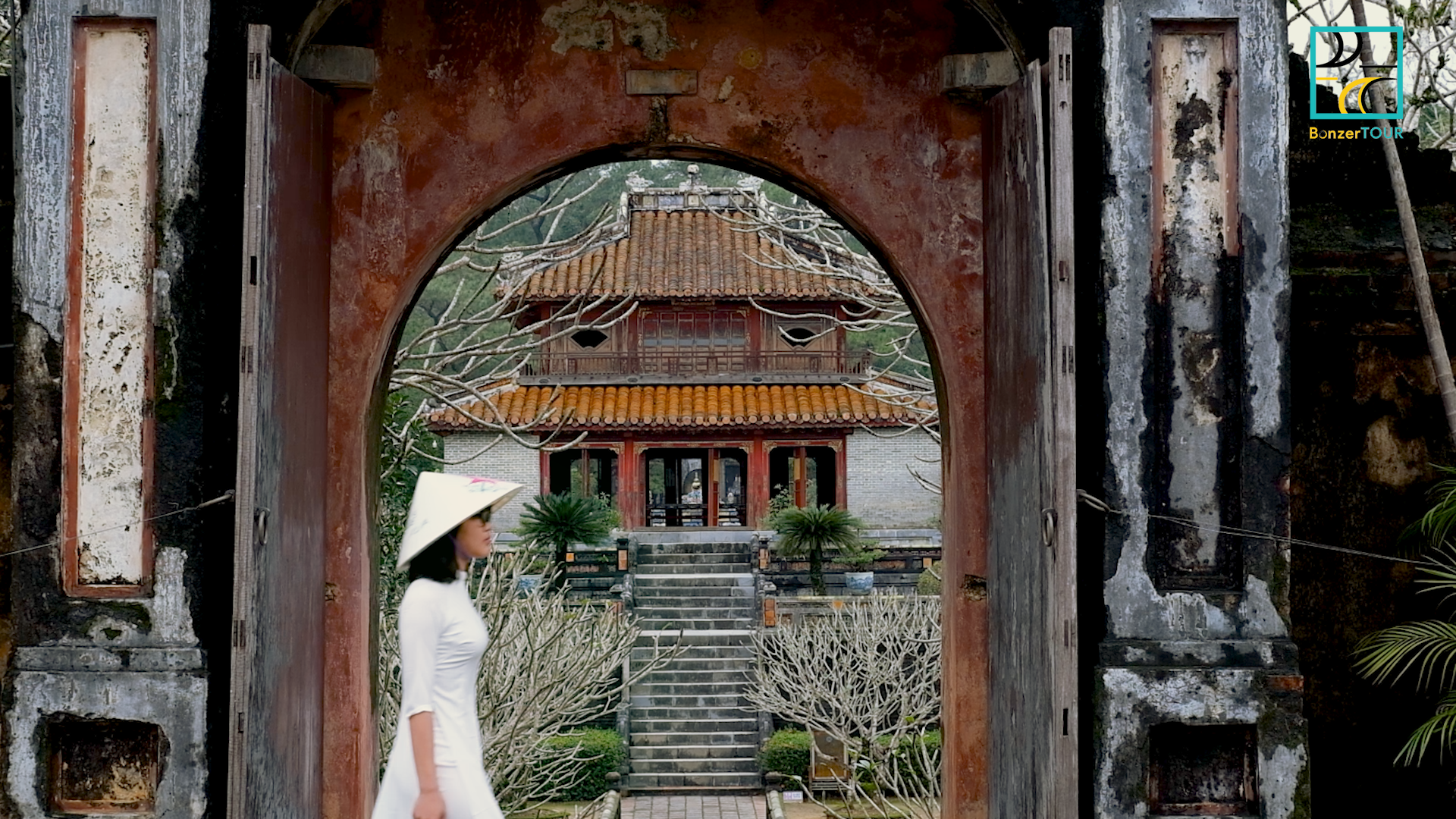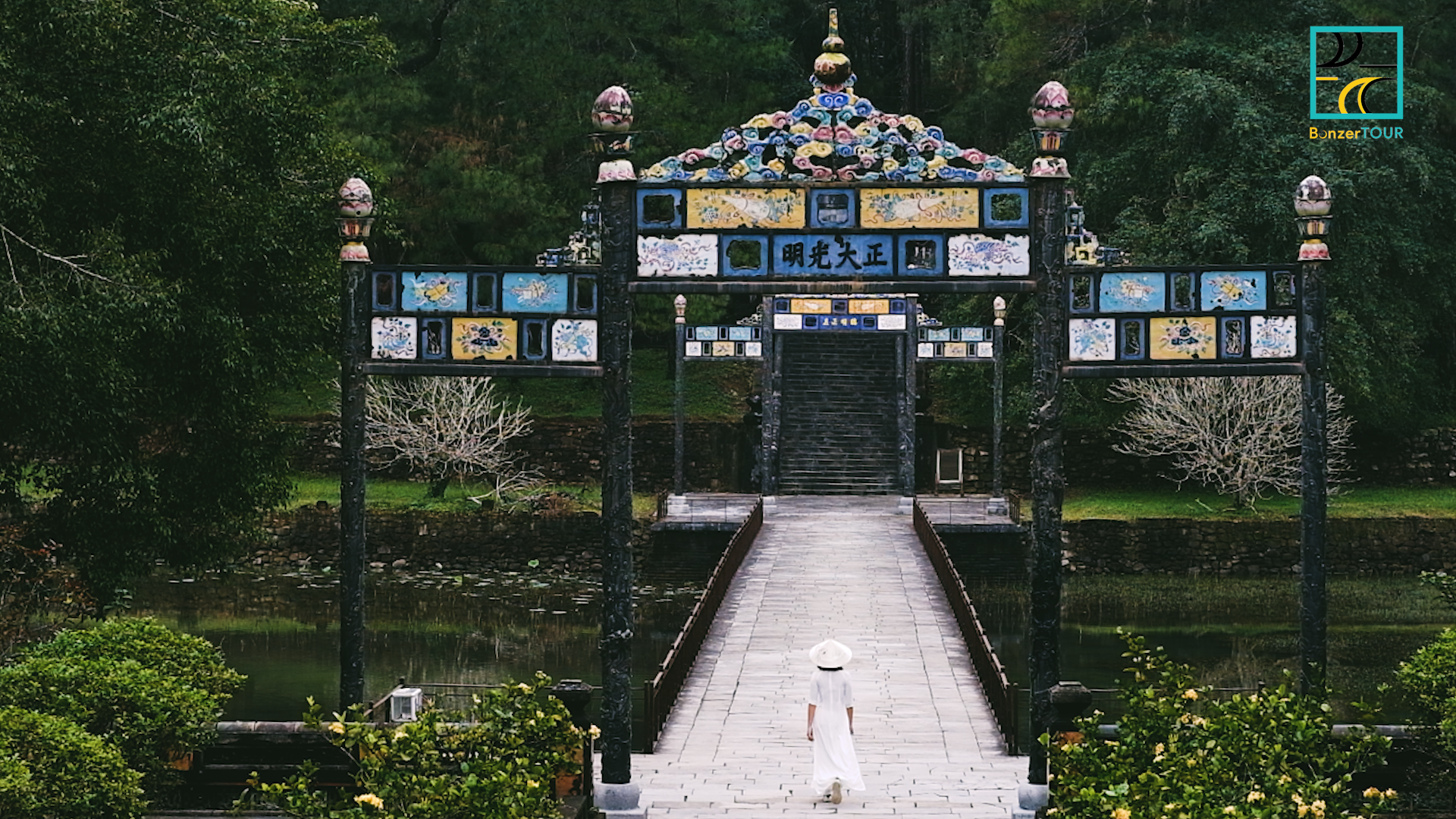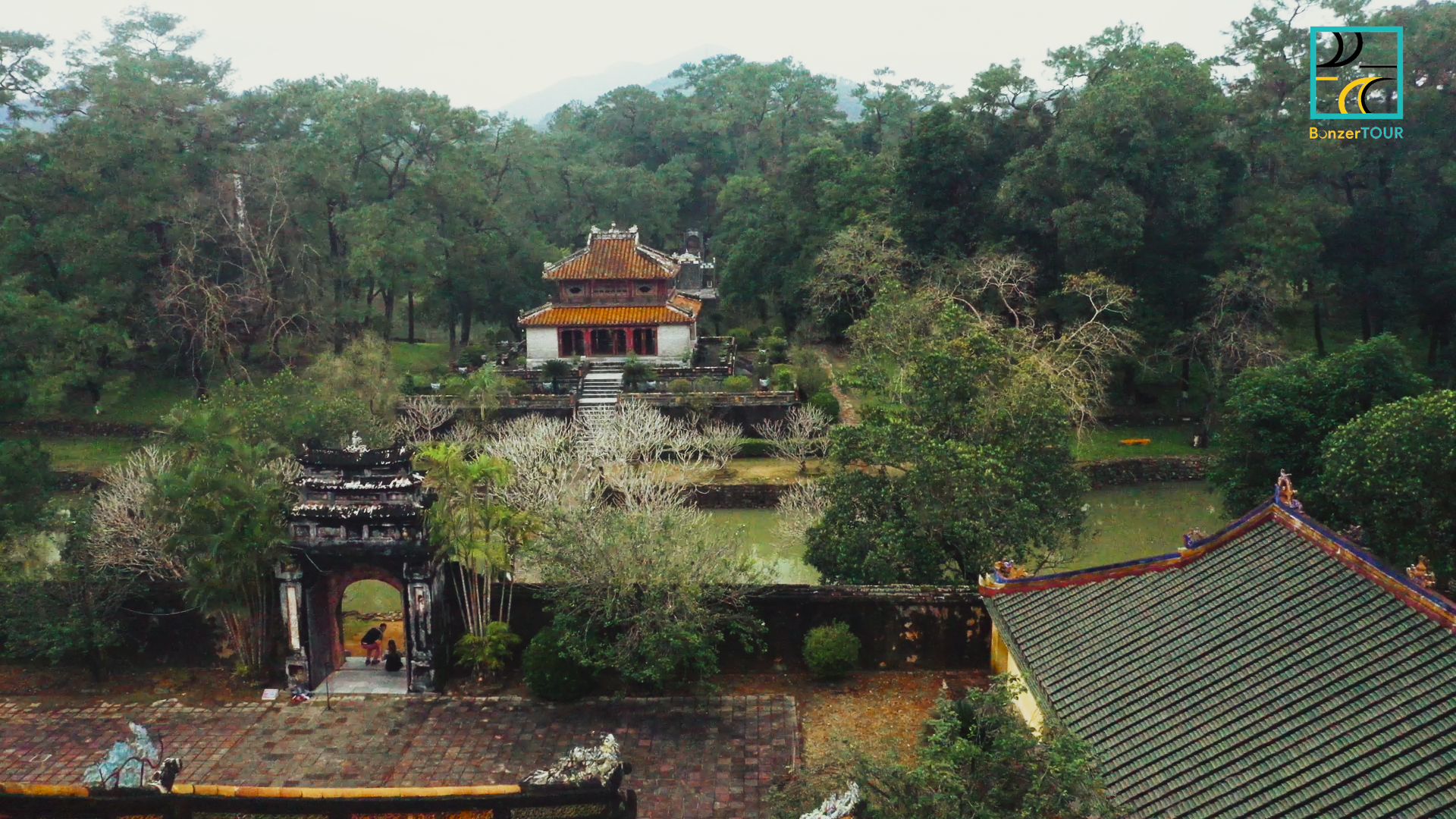Cập nhật: 01-01-1970 12:00:00 | Blogs about Vietnam | Lượt xem: 1225
If you’re looking for a destination with serene natural beauty and profound historical significance in Hue, you simply can’t miss the Mausoleum of Emperor Minh Mang - the second ruler of the Nguyen Dynasty. As the most stately of all Hue royal tombs, this massive complex is a masterpiece in terms of architecture and landscaping, providing a perfect spot for wandering and soaking up the history and tranquility. Offering a fascinating glimpse into the city’s rich heritage, the mausoleum will deepen your appreciation for Hue’s role as the cradle of Vietnam’s imperial legacy. Minh Mang King Tomb and Hue are must-see in a Vietnam culture and history trip.
The Mausoleum of Emperor Minh Mang, also known as “Hieu Lang”, is a royal tomb located at the foot of Cam Ke Mountain on the west bank of Perfume River, about 12 km from the center of Hue City. Built from 1840 to 1843, the mausoleum reflects not only Minh Mang’s will and personality but also his vision of harmony between man and nature. It stands as a tribute to his legacy, encapsulating the philosophical and cultural essence of his reign.
Emperor Minh Mang’s Mausoleum is now a prominent sight in Hue, a must-see for anyone visiting this city. It is a significant part of the Complex of Hue Monuments, which was designated a UNESCO World Heritage in 1993. The site is open from 7:00 am to 5:30 pm daily, and its entrance tickets cost 150,000 VND (about $6) for adults and 30,000 VND (about $1.2) for children.

Emperor Minh Mang (1791 - 1841) was the second ruler of the Nguyen Dynasty - the last imperial dynasty of Vietnam. Reigning from 1820 to 1841, he is remembered for his strong governance and major reforms in the fields of politics, military, and culture. Minh Mang decided to build his tomb in the seventh year after ascending the throne, but it took the emperor 14 years to select the best location with good feng shui for his eternal resting place.
The construction of Ming Mang’s mausoleum began in 1840 under his order. However, the emperor passed away shortly afterward. It wasn’t until 1843, two years after his passing, that the whole tomb complex was completed by his son and successor - Emperor Thieu Tri.
The Mausoleum of Emperor Minh Mang spans over a total of 18 ha (not including 475 ha of the restricted area surrounding it) and is enclosed by a 1750-meter-long wall called “La Thanh”. The highlight of this tomb complex lies in the perfect combination of architecture (man-made elements) and natural landscape (natural elements). Overall, the mausoleum is divided into five main zones: Bai Dinh Courtyard, the Stele House and Salutation Courtyard, Hien Duc Gate and Sung An Temple (worship area), Minh Lau Pavilion, and Buu Thanh (where the emperor is laid to rest). The site is enveloped by lush gardens, shaded pathways, and serene lakes, making it an oasis amidst natural beauty.
Minh Mang’s Mausoleum has a symmetrical layout that symbolizes balance and order. It comprises 40 architectural works including palaces, temples, pavilions, and courtyards, all arranged symmetrically on a 700-meter-long vertical axis stretching from Dai Hong Mon to the foot of La Thanh behind the emperor’s tomb. This axis is called “Than Dao” - a characteristic of traditional Oriental architecture that represents integrity and uprightness. The tomb itself is located on a small hill surrounded by a lotus-filled lake, epitomizing peace and eternity.
This grand gate serves as the gateway to the tomb complex, symbolizing the threshold between the earthly world and the spiritual realm. Built of stone and brick, Dai Hong Mon measures 9 x 12 m and stands out with gorgeous crimson and golden shades, as well as intricate cloud and dragon-shaped ornaments. This is a typical three-aisle gateway in Vietnamese Buddhism with the middle aisle being the biggest and two smaller ones flanked on its sides. However, the middle aisle was only opened once for transferring the emperor’s coffin and has been closed since then.
Behind Dai Hong Mon is a square courtyard named Bai Dinh, which was paved with flagstones from Vietnam’s famous Bat Trang Pottery Village. The courtyard is adorned with meticulously carved stone statues of mandarins, elephants, and horses, exuding a solemn and regal atmosphere.

At the end of Bai Dinh Courtyard, you will find Bi Dinh - an imposing structure that houses a massive stone stele inscribed with an account of Emperor Ming Mang’s reign. Composed by his son, Emperor Thieu Tri, the stele provides informative insights into Ming Mang’s accomplishments and virtues. Bi Dinh’s architecture is elegant and enduring, showcasing traditional Vietnamese craftsmanship. Behind Bi Dinh is San Chau (the Salutation Courtyard).
The Hieu Duc Gate marks the beginning of the mausoleum’s worship area, which is embraced by a square wall symbolizing the Earth. The name “Hieu Duc” means filial piety and virtue, expressing King Minh Mang’s respect for his ancestors and the nation.
Placed in the middle of the worship area is Sung An Temple, a central feature of the mausoleum. If Buu Thanh is the burial place of the body, Sung An Temple is the residence of the soul. Dedicated to Emperor Ming Mang and his empress, this temple is a sacred place for paying respects and learning about the emperor’s life.
Situated on a small hill, Minh Lau Pavilion, or the Bright Pavilion, offers stunning panoramic views of the surrounding area and is ideal for taking in the beauty of the mausoleum’s natural landscape. Its octagonal shape and symbolic architecture represent enlightenment and eternity. From this two-story building, you will see Sung An Temple in the East, Buu Thanh in the West, five hills in the North, and one hill and one island in the South. There used to be seven works symbolizing the Big Dipper (a miniature image of the Universe) on each hill and island, but they no longer exist.
While the mausoleum’s place of worship is a square zone symbolizing the Earth, Buu Thanh’s circular shape symbolizes Heaven. Buu Thanh, Minh Lau Pavilion, and Sung An Temple respectively represent the past, the present, and the future. A crescent-shaped lake named Tan Nguyet (New Moon) embraces Buu Thanh, on which the 33-step Thong Minh Chinh Truc Bridge leads to the emperor’s resting place. You can watch the tomb from a respectful distance, appreciating its simplicity and the sense of reverence it conveys.

The best time to visit the Mausoleum of Emperor Ming Mang and other attractions in Hue is during its dry season (November - April). This period offers the most pleasant weather conditions with temperatures ranging from 18 - 25°C in the cooler months, making it ideal for exploring the site comfortably. Among these months, November to February is the most favorable time with lower temperatures and fewer chances of rainfall, allowing you to fully appreciate the historical and architectural beauty of the mausoleum without the discomfort of excessive heat or humidity.
On the other hand, it is best to avoid visiting during the summer months - from May to October. This is when Hue experiences high humidity, frequent rain showers, and temperatures that can soar above 35°C, resulting in poor experiences with outdoor activities. To get the most out of your trip, it’s best to aim for early mornings or late afternoons for fresher air and less crowds.
Along with other Vietnam travel destinations, Hue is definitely a mesmerizing city to visit in Vietnam.

Essentials Tours - 10 days 9 nights

Culture - History - 13 days 12 nights

Essentials Tours - 14 days 13 nights















